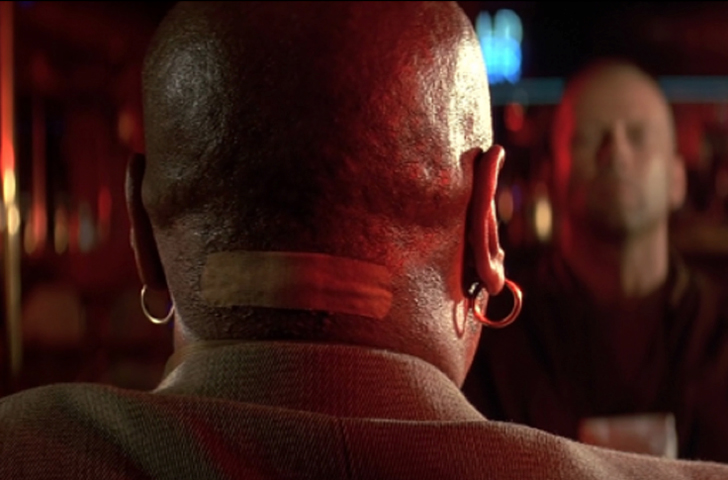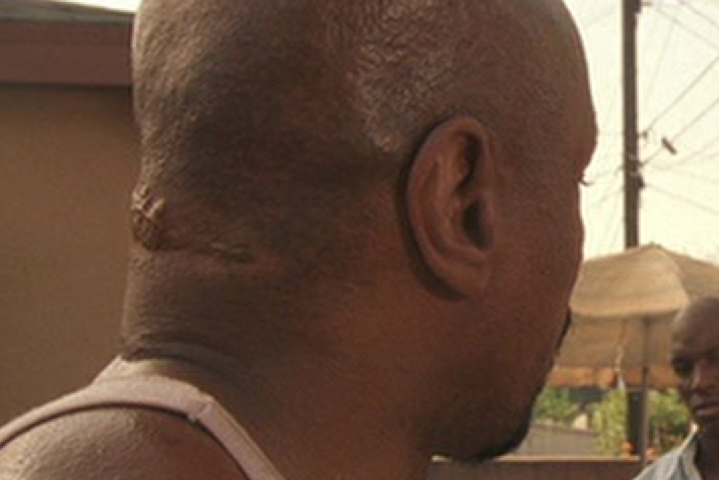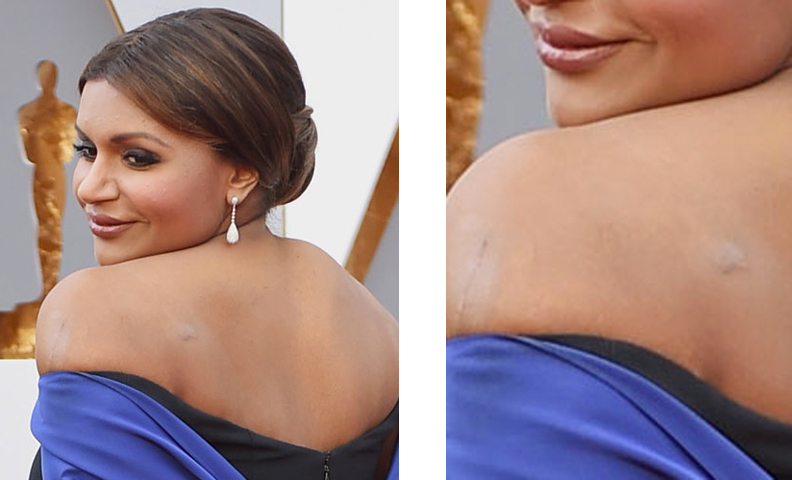In “Passenger 57,” Wesley Snipes says to “Always bet on black.” For those with black skin, one can wager they might be prone to the following skin issues

Anyone out there recognize this young actor? Yes, that's a 1970's era image of deep voiced dude, Morgan Freeman. Something seems missing compared to his current appearance. Freeman's career hit its stride with the movie "Driving Miss Daisy" He was already in his 50's and had accrued some amount of...experience.

Today, Academy award winner Morgan Freeman is speckled with many discrete dark bumps. These are not warts, there is no virus involved. Freeman is just one of the many dark-skinned dudes dogged by dermatosis papulosa nigra (DPN's). People of color can develop these small dark facial bumps, usually on the cheeks. And, yes, they come on with age. The lesions are benign, not at risk for turning into skin cancer. Lasers and electrocautery can make them vanish.

The problem with a close shave...
Here is Ving Rhames, an African American actor with active roles in action adventures, such as the "Mission Impossible" franchise. His cheeks show a lot of activity too. What you call shaving bumps or razor bumps, doctors (with extra time on their hands) call pseudofolliculitis barbae or PFB, a name with more syllables than are usually uttered in a summer suspense flick. This very common problem is due to the close shaving of curly hairs. The short-cropped hairs delve back under skin, creating an inflammatory, pimple-like reaction. Occasionally, small scars occur. Management includes not shaving closely (promoting light beard growth), and use of Retin-A creams to promote open pores. For severe inflammation, antibiotics topically and by mouth are of great temporary benefit. And for longer lasting benefit, shooting at movie bad guys and spectacular chase scenes can also relieve tension.
Rhames' contribution to this discussion doesn't stop at razor bumps. Rhames is also part of a movie mystery. One of Rhames' breakout roles was as a gangster in Quentin Tarantino's classic "Pulp Fiction." The introductory shot of Rhames shows a large bandage stretched across the back of his neck. Film fan boys speculated at length what was the symbolism of that poultice. Did Tarantino have some underlying message by zooming in on the uber dressing?

Apparently, not so much. Rhames had either just had skin surgery on the base of his scalp, or was just hiding a scar. In the film, "Baby Boy," all is revealed. A large, thick scar, surrounded by small ingrown hair bumps confirms a condition called (brace yourselves!): acne keloidalis nuchae, aka AKN. Seen almost exclusively in black men, AKN starts with pimply spots on the back of the neck which then form raised keloid scars. While some patients respond to acne treatments like antibiotics and Retin-A creams, others turn to surgery to cut out pesky pores, like Rhames appears to have done. AKN can recur, even after surgery.

Speaking of scarring, check out actress and comedian Mindy Kaling on the red carpet. The raised scars on her back are called keloids and form from an overgrowth of collagen. Though they can affect all races, they are said to be more common in people of color. The upper chest, upper back and ear lobes (!) are common areas. Despite the temptation, surgically removing keloids is not a good option. The pesky lesions can reform or even get worse. Injecting these over eager scars with a form of cortisone causes a gradual flattening. Laser can also improve the appearance, keeping Kaling camera-ready.

Is Angela Bassett beginning to bald?
Angela Bassett displays a common cause of frontal hair thinning in African American women. Corn rows, a form of tight braiding, can cause this hair loss, called traction alopecia. Chronic tension on the hair follicles causes them to shut down, with potentially permanent balding. Looser braids, employed as early as possible, are recommended.
Vivica Fox also risks frontal hair loss associated with long term use of corn row hair styling. Our advice to these ladies: Give your follicles a rest, so they can perform their best.

Some conditions are more common in those of African descent. Comedian and actor Bernie Mac coped for years with Sarcoidosis. This image shows a facial scar that may or may not have been due to Sarcoid or its treatment. This rare disease is a form of inflammation that causes firm nodules in the skin, lungs and other organs. Many have speculated whether there is a bacteria that triggers an immune response, but no definitive critter has been identified. In Mac's case, a dermatologist worked with him on his skin lesions. Usually, cortisone injections are used to flatten the nodules and immune suppressing medicines work to clear the lungs. Unfortunately, scarring can develop in the lungs, increasing the risk of infection. The famous funny-man passed away at the age of 50 from pneumonia.




